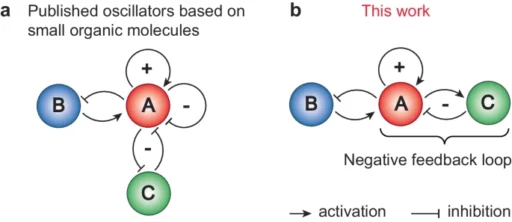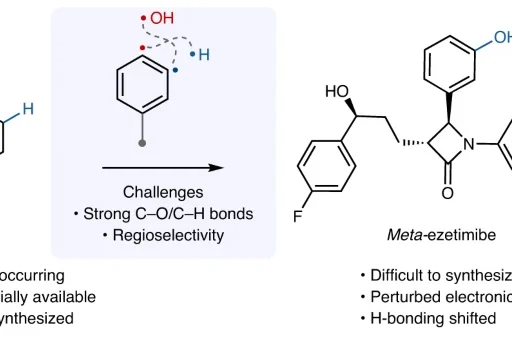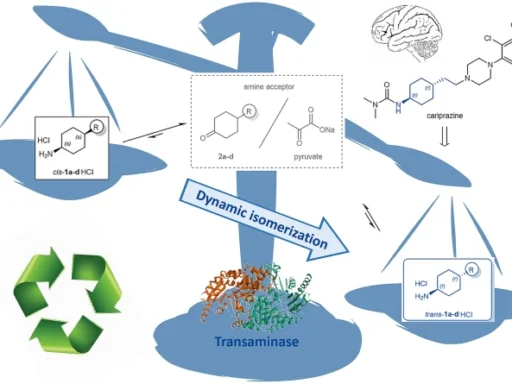Table of Contents
An overview of the principles and applications of selenium catalysis:
Selenium, an element with distinctive characteristics, has garnered considerable interest in catalytic processes because of its versatility and efficacy. Selenium provides unique benefits in organic chemistry compared to conventional transition metal catalysts, such as enhanced reactivity and selectivity. Its participation in several processes, such as redox reactions, nucleophilic substitutions, and radical reactions, demonstrates the significance of its role as a catalyst.

Analyzing negative feedback Biological oscillators:
Organic oscillators are complex systems that can display rhythmic oscillations in chemical species without any external stimulation. The oscillations happen because of the interaction between autocatalytic and inhibitory processes. For the periodic behavior to continue, negative feedback mechanisms are necessary. Gaining a comprehensive understanding of the mechanisms behind organic oscillators is crucial for investigating their potential uses in many domains, such as materials science, biology, and signal processing.
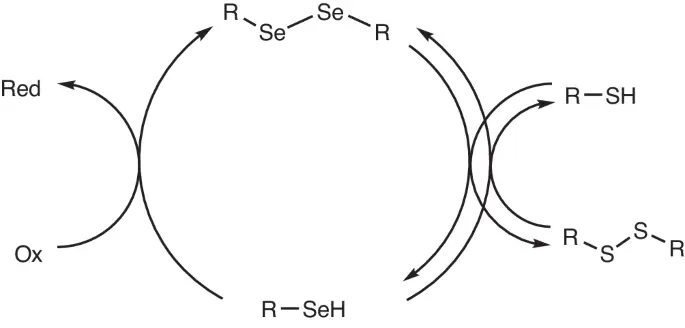
The role of selenium in catalytic processes is significant:
Selenium as a Catalyst:
Selenium-based catalysts have been prominent in recent years for their effectiveness and specificity in organic conversions. Selenium catalysts have distinctive electrical characteristics and stability, setting them apart from traditional catalysts. As a result, they are highly suitable for a diverse array of reactions. Their ability to enable various transformations, such as the formation of carbon-carbon bonds, the production of asymmetric synthesis, and cascade reactions, demonstrates their diversity and usefulness in the field of synthetic chemistry.
Selenium catalysis mechanisms:
The processes responsible for selenium catalysis are varied and depend on the particular reaction and substrate in question. Selenium species often function as electrophiles, promoting the creation or breaking of chemical bonds by coordinating and activating functional groups. Because selenium has redox activity, it can transfer electrons, which creates reactive intermediates that are necessary for catalytic reactions. Understanding these pathways is critical for fully utilizing selenium catalysis’s potential in organic synthesis.

Exploring Organic Oscillators:
Definition and Function: Devices known as organic oscillators, composed of organic materials, exhibit oscillatory behavior. They function by generating repetitive and periodic oscillations, which are essential for a variety of applications in fields such as electronics and biology.
Organic oscillators are chemical systems that exhibit rhythmic oscillations in one or more chemical species. These oscillations happen because of how complexly autocatalytic and inhibitory reactions interact with each other, leading to self-maintained periodic behavior. Diverse domains such as materials science, biology, and signal processing utilize organic oscillators to accurately manage oscillatory behavior.
Categories of Organic Oscillators:
Several groups can categorize organic oscillators based on their underlying mechanics and features. Notable examples of these types include the Belousov-Zhabotinsky (BZ) oscillators, Brusselator systems, Lotka-Volterra models, and reaction-diffusion systems. Each category displays distinct qualities and behaviors, rendering them appropriate for various purposes and investigations.

Integration of Selenium Catalysis in Organic Oscillators:
Integration’s foundations:
By incorporating selenium catalysis into organic oscillators, we can provide new possibilities for manipulating and regulating their behavior. Researchers can manipulate the kinetics and dynamics of oscillatory systems using selenium catalysts’ distinctive reactivity and selectivity. This manipulation creates new oscillation patterns and phenomena. Understanding how catalytic reactions and feedback mechanisms work together is key to successful integration. To do this, a multidisciplinary approach is needed that combines synthetic chemistry, theoretical modeling, and experimental validation.
Advantages and Difficulties:
The incorporation of selenium catalysis in organic oscillators offers several advantages, such as improved regulation of reaction rates, a broader range of reactions, and adjustable oscillation characteristics. Selenium catalysts possess exceptional efficiency and selectivity, rendering them highly valuable for controlling the dynamics of oscillatory systems. To fully use the potential of selenium catalysis in organic oscillators, however, problems must be solved related to the stability of the catalyst, the compatibility of the substrate, and the improvement of the reaction. The cooperation of synthetic chemists, theoreticians, and experimentalists is crucial to overcome these problems and make progress in the field.
Applications of Selenium Catalysis in Oscillatory Systems:
Chemical Synthesis: Utilization of Selenium Catalysis in Oscillatory Systems for Chemical Synthesis
The use of selenium as a catalyst in oscillatory reactions has the potential to produce intricate chemical compounds with precise stereo- and regioselectivity. Researchers can gain precise control over the production of chemical bonds and the transformation of functional groups by utilizing the oscillatory behavior of reaction mixtures. This allows for the creation of complex molecular structures. These reactions are utilized in drug development, materials science, and other fields that require meticulous management of chemical synthesis.
Biological Systems: Integrating selenium catalysis into biological oscillators provides valuable insights into the dynamic behavior of living organisms. Oscillatory processes are crucial in a range of biological phenomena, including circadian rhythms and cell signaling pathways. Selenium-catalyzed reactions offer a flexible framework for investigating and adjusting these oscillations, opening up possibilities for use in drug development, diagnostics, and medical treatments. Exploring the relationship between selenium catalysis and biological oscillators has the potential to fundamentally transform our understanding of biological systems and pave the way for the creation of novel treatment approaches.
Industrial Applications:
Various domains within the industrial sector, such as polymerization, fine chemical synthesis, and environmental cleanup, utilize selenium catalysis. Selenium catalysts are excellent instruments for enhancing industrial processes and reducing waste formation due to their ability to customize reaction kinetics and selectivity. Furthermore, incorporating oscillatory reactions into industrial environments has the potential to enhance process efficiency and energy conservation, promoting sustainable manufacturing methods.
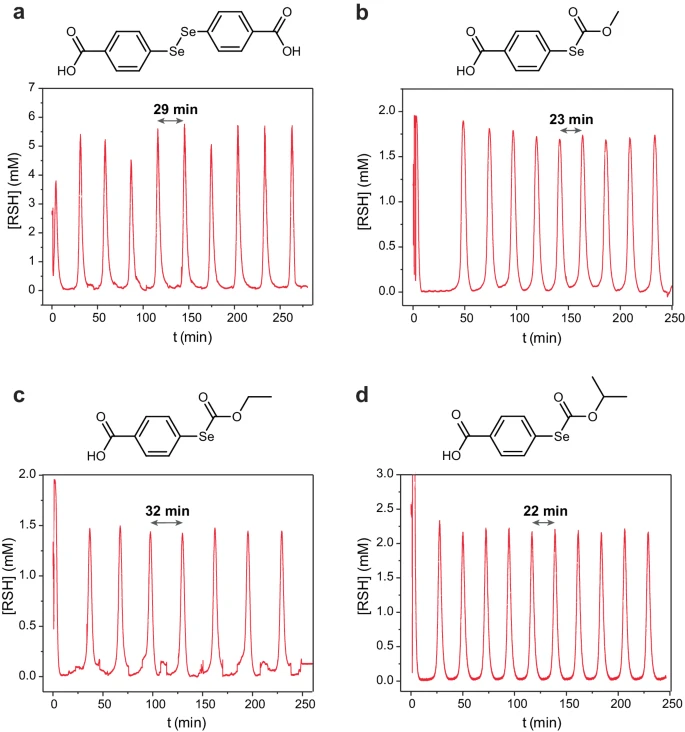
Illustrative Analyses and Exemplifications:
We will provide several case studies and examples to demonstrate the principles and applications mentioned earlier. These will highlight the latest advancements in selenium-catalyzed oscillatory systems across diverse fields of chemistry and biology. The case studies will show how flexible and effective selenium catalysis is at controlling and changing the way organic oscillators behave, showing how it could be used in many different situations.
Prospects and areas for further investigation:
The field of organic oscillators enabled by selenium catalysis is still in its early stages, offering many chances for further investigation and creativity. Future research endeavors could prioritize the creation of innovative selenium catalysts that exhibit improved reactivity and selectivity. Furthermore, researchers could focus their efforts on deciphering the intricate mechanisms that underlie selenium-catalyzed oscillatory events. Furthermore, researching new possibilities for applying selenium catalysts in synthetic chemistry, materials science, and other fields could be of interest. The topic of selenium catalysis in organic oscillators would greatly benefit from collaborative efforts among academics from other disciplines, which are crucial for its advancement and realization of its full potential.
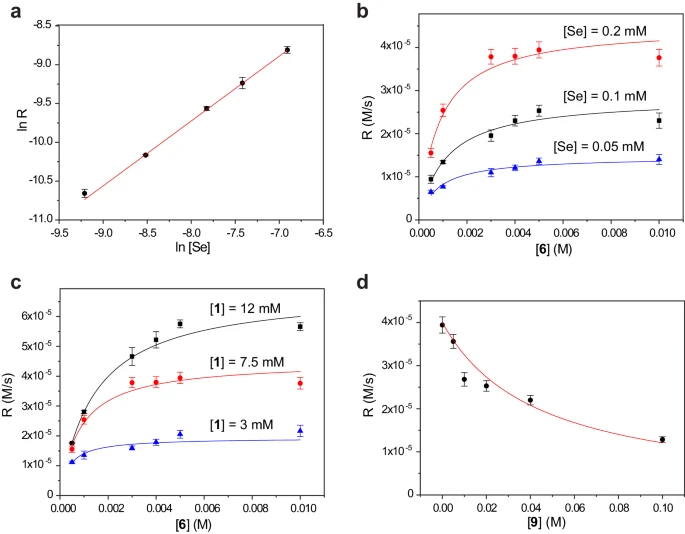
In conclusion:
Overall, selenium catalysis is essential for facilitating negative feedback in organic oscillators, providing unparalleled regulation over the dynamics and behavior of dynamic chemical systems. By incorporating selenium catalysis into organic oscillators, scientists can open up new possibilities for chemical synthesis, biological modulation, and commercial applications. Future developments in dynamic chemistry could significantly benefit from the use of selenium catalysis as we continue to explore the unknown aspects of oscillatory events.
Distinct Frequently Asked Questions:
1). What characteristics make selenium catalysts suitable for use in organic oscillators?
Selenium catalysts are very reactive, selective, and stable, which makes them perfect for controlling and changing how organic oscillators behave.
2). What difficulties arise when using selenium catalysis in organic oscillators?
The challenges include maintaining catalyst stability, optimizing reaction conditions, and understanding the interplay between catalytic processes and feedback systems.
3). What are the advantages of selenium catalysis for organic oscillators?
Selenium catalysis allows for the exact manipulation of reaction kinetics and dynamics, resulting in the production of intricate molecules with exceptional selectivity.
4). What are some practical uses for selenium-catalyzed oscillatory processes in real-life scenarios?
Applications encompass drug development, materials research, and industrial processes, where meticulous management of chemical synthesis and reaction kinetics is crucial.
5). What are the upcoming areas of study in selenium catalysis and organic oscillators?
Subsequent investigations could prioritize the creation of innovative catalysts, clarify reaction processes, and investigate other uses in synthetic chemistry, materials science, and other related areas.
For more chemistry blogs, visit chemistry Master

